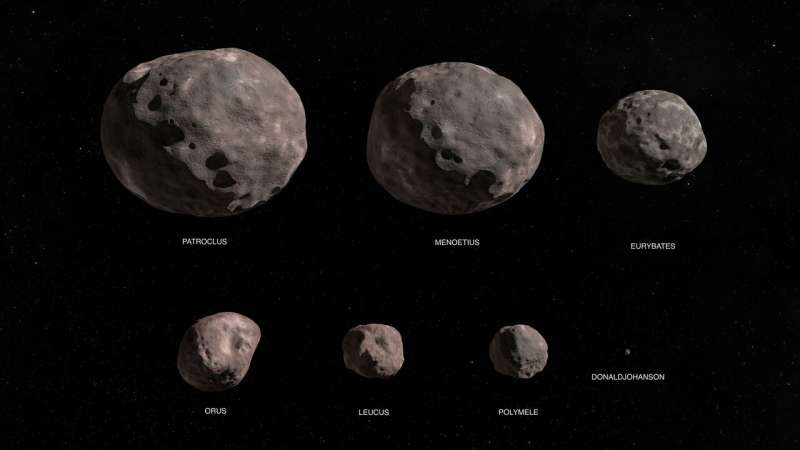It is perhaps unsurprising, then, that on Feb. 22, 1906, Wolf made another important discovery: an asteroid with a particularly unusual orbit. As Jupiter moved, this asteroid remained ahead of Jupiter, as though it was somehow trapped in Jupiter's orbit around the Sun. German astronomer Adolf Berberich observed that the asteroid was nearly 60 degrees in front of Jupiter. This specific position reminded Swedish astronomer Carl Charlier of a peculiar behavior predicted by the Italian-French mathematician Joseph-Louis Lagrange over 100 years earlier. Lagrange argued that if a small body (such as an asteroid) is placed at one of two stable points in a planet's orbit around the Sun (called the L4 and L5 Lagrange Points), the asteroid would remain stationary from the planet's perspective due to the combined gravitational forces of the planet and the Sun. Charlier realized that Wolf's asteroid was actually caught in Jupiter's L4 Lagrange point. Until Wolf's discovery, Lagrange's prediction had only been a mathematical exercise. Now, these astronomers had photographic proof that Lagrange was right.
Eight months later, one of Wolf's graduate students August Kopff discovered an asteroid in Jupiter's other stable Lagrange point L5, as well as another asteroid caught in L4 a few months afterward.
Once three of these Lagrange point-inhabiting asteroids had been discovered, astronomers began wondering what to call them. At this point, most asteroids were given the names of women from Roman or Greek mythology, unless their orbits were particularly strange. The asteroids in question certainly had bizarre orbits, so Austrian astronomer Johann Palisa suggested the names Achilles, Patroclus, and Hektor after characters from The Iliad. Achilles was a nigh-invulnerable Greek hero (except for his heel), and Patroclus was a friend of his. Hektor, prince of the Trojans, eventually killed Patroclus, and Achilles exacted revenge by killing Hektor. The recently discovered asteroids were then given Iliad-inspired names.
As astronomers continued discovering asteroids hiding in Jupiter's Lagrange points, they continued naming them after heroes of the Trojan War and began referring to them as "Trojan asteroids." ("Trojan asteroids" would eventually refer to asteroids inhabiting any planet's stable Lagrange points, though names from The Iliad are reserved for Jupiter's Trojans.) It later became convention to name Jupiter's L4 asteroids after Greek characters and Jupiter's L5 asteroids after Trojan characters, so L4 and L5 became the "Greek camp" and the "Trojan camp" respectively. Palisa apparently did not foresee this tradition, for his naming of first three asteroids led to a Greek "spy" residing in the Trojan camp (Patroclus) and a confused Trojan (Hektor) who probably wandered into the Greek camp hoping to order some of their famous custom-built wooden horses.
No spacecraft has ever been to this population of small bodies, called the Trojan asteroids. Now, a new NASA Discovery Program mission called Lucy will fly by seven Trojan asteroids, plus a main belt asteroid, to survey the diversity of this population in a single 12-year record-breaking mission. The Lucy spacecraft launch window opens Oct. 16, 2021.
Explore further



